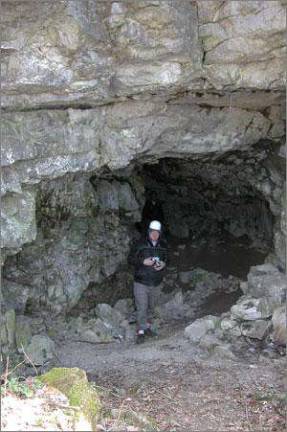Living in the past

Archaeologists want world-historical site preserved as a park, By Pamela Chergotis Goshen Mount Lookout commands a magnificent view of farm country. The dead-flat expanse of black dirt is punctuated here and there by wooded hills and barns. A ribbon of highway passes underneath. For the imaginative visitor, there’s a different view: a frozen tundra dotted with caribou and many strange beasts no one alive today has ever seen the giant beaver, the mastodon, the flat-headed peccary. Tucked into the side of the hill, close to the summit, are a network of limestone caves. Hunters live there for part of each year, when the caribou migration brings them this way. That’s what life in Goshen was like 12,000 years ago, when its first known human settlers moved in. While the ancient scene is vastly different from the modern, the reasons why this area has always attracted humans haven’t changed much over the millennia (see sidebar, below). The caves constitute one of the most important archaeological sites in the world. They have produced some of the earliest evidence of human occupation in the Western Hemisphere. Archaeologist William Sandy, one of several guides who led groups on a rare tour to the caves on Saturday, said they are older than 99 percent of all the archaeological sites in North America. In addition to their exceptional antiquity, the caves are remarkable in that they have sheltered humans continuously for most of those 12,000 years, from the stone age through to the 18th century. Stratified layers of sediment, which by modern times reached nearly to the ceiling, contain evidence from each phase of human occupation. It is the only site of its kind in the state, and rare anywhere in the world. Most of the artifacts found in the caves were fluted points for hunting spears, which are unique to the Americas. Early hunters chipped long flakes from each side of the point to allow the blood from a speared animal to flow more freely. These points